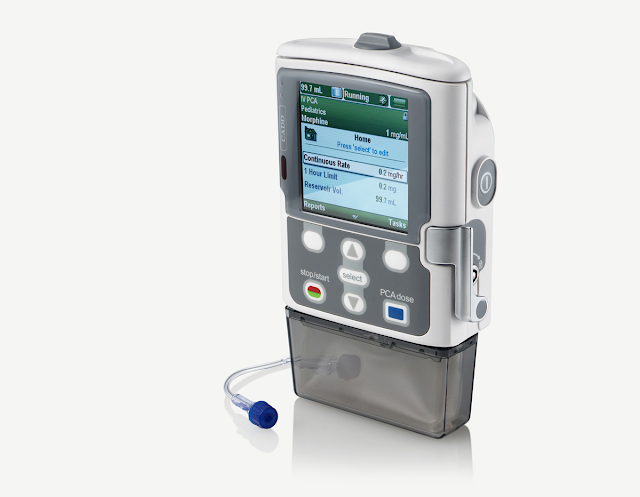Infusion Pumps: Revolutionizing Patient Care
Infusion pumps have transformed the delivery of medications in healthcare facilities. These medical devices provide precise doses of fluids, nutrients, medications or blood transfusions into patients over a set period of time. With advances in technology, today's infusion pumps are smaller, smarter and more accurate than ever before, improving patient outcomes
History of Infusion Pump Development One of the earliest ideas for medication delivery via infusion pump dates back to the 1860s. However, it was not until the mid-20th century that practical infusion pump designs were developed. In the 1950s and 60s, mechanical and electric infusion pumps were introduced that could deliver medications more consistently than gravity-fed methods. These early pumps paved the way for further innovations over subsequent decades.
By the 1980s, microprocessor technology allowed for programmable infusion settings and customizable delivery profiles in pumps. This ushered in a new era of precision for time-critical therapies. As semiconductor technology advanced rapidly in the 1990s and 2000s, infusion pumps miniaturized further while gaining new functionalities. Today's modern infusion pumps are highly sophisticated medical devices that leverage the latest engineering.
How Infusion Pumps Work
A typical modern Infusion Pump uses a small internal motor to move fluid through flexible tubing from an IV bag or syringe reservoir into the patient's vein or other access point. The pump contains a programmed microprocessor that controls the speed and timing of the motor. Pumps can be customized for the specific needs of each patient and therapy.
Delivery settings like fluid type, flow rate, dosage amount and schedule are programmed into the device. An electrical power source, usually batteries, drives the pumping mechanism. Pumps may optionally connect to hospital information systems for remotely monitoring pump status. Advanced safety features help prevent medication errors through programmable drug libraries and dose limits.
Sensors provide feedback to the microprocessor so that the programmed flow rate is precisely maintained despite variations in tubing resistance or reservoir pressure over time. Alarms alert caregivers to issues like air bubbles, occlusions or low battery/fluid levels. The pump’s electronics keep accurate records of dosing activity for clinicians.
Applications in Hospitals
Infusion pumps see widespread clinical use due to their benefits over basic intravenous (IV) therapy. In hospitals, they are commonly used for:
- Patient-controlled analgesia (PCA) pumps for post-surgical pain management. PCA allows patients to self-administer as-needed pain medication doses.
- Chemotherapy administration via electronic pumps programmed with complex dosage timings. This improves dosing accuracy and safety compared to Gravity-fed methods.
- Total parenteral nutrition (TPN), where balanced macronutrients and vitamins are delivered into a central line for patients unable to receive nutrition enterally.
- Vasoactive drug therapy for critical care patients with conditions affecting blood pressure, heart rate, or other cardiovascular functions.
- epidural or intrathecal infusions for obstetric analgesia or post-surgical pain relief administered directly into the spinal canal.
- Insulin infusion pumps that continuously deliver small basal doses of insulin along with additional bolus doses around mealtimes to mimic normal pancreatic function for diabetes management.
Benefits over Gravity-Fed Infusions
Compared to conventional gravity-fed IV systems, electronic infusion pumps provide significant clinical advantages:
Precision - Complex, time-sensitive therapies that require milliliter-level accuracy over multiple hours are feasible only with computer-controlled pumps. They eliminate dosing errors from manually-regulated gravity drips.
Mobility - Ambulatory IV therapies are now possible using portable wearable pumps, allowing patients early recovery and hospital discharge. Gravity-dependent systems tether patients to bedside poles.
Safety - Dose error-reduction features like soft and hard limits, mandatory entries, and dose calculation tools help prevent over/under-infusions associated with misprogrammed pumps or free-flow incidents.
Flexibility - Customizable delivery profiles tailored for each patient and therapy protocol enhance treatment outcomes. Gravity systems offer limited adjustability and standard flow settings only.
Monitoring - Built-in pumping records and connectivity options simplify clinical documentation while remote monitoring detects therapy interruptions promptly. Gravity IVs lack such oversight capabilities.
Overall, as health systems demand higher quality, lower cost and increased safety, the role of infusion pumps in care delivery will continue growing both within hospitals and in home/outpatient settings. Their precision, flexibility and monitoring features translate to improved outcomes without increasing workload for busy clinical staff. Infusion pumps have clearly revolutionized the administration of IV therapies.
Looking ahead, new opportunities lie on the horizon for infusion pump technology. Integration of devices with electronic health records promises real-time tracking of medication delivery profiles alongside patient labs and vitals. Cloud connectivity would enable remote monitoring of outpatients' pump function by caregivers.
Addition of biometric sensors may pave the way for closed-loop "artificial pancreas" systems delivering automated insulin dosing in diabetics based on continuous glucose readings. Implantable infusion pumps may eventually infiltrate applications such as chemotherapy, extending chronic treatment to cancer types previously not addressed with pump systems.
The safety features of "smart pumps" interfaced with electronic medication administration records will further minimize pump programming errors, a persistent source of patient harm even today. Miniaturization is allowing infusion capabilities to piggyback on existing vascular access already present in ICUs or outpatient clinics.
Overall, the infusion pump continues its evolution as a prime example of medical technology improving patient care and outcomes through greater precision, flexibility, safety and convenience compared to conventional alternatives. Advancing engineering promises to expand pump applications across an even broader range of acute and chronic conditions in the coming decades.




Comments
Post a Comment